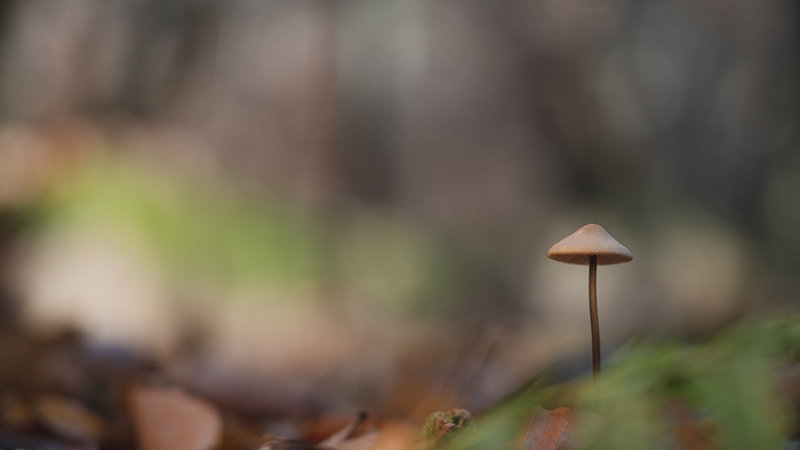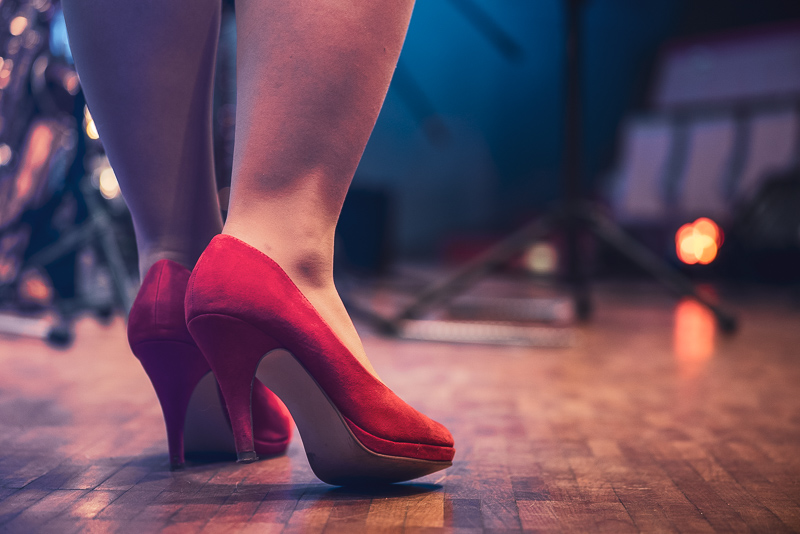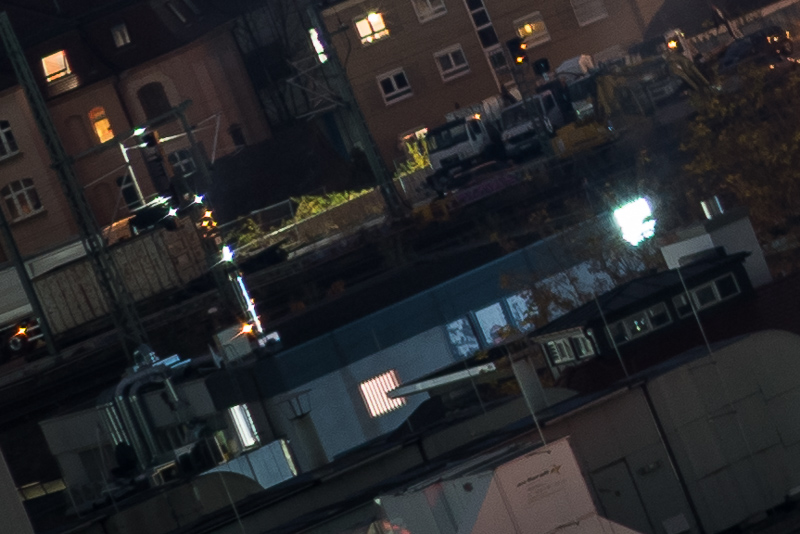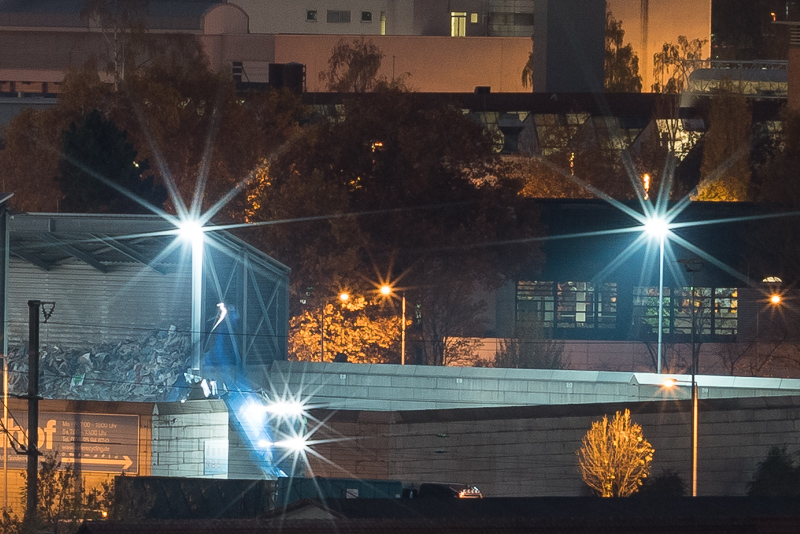Introduction

Many of you might not even know that Minolta also produced M-mount lenses and even an M-mount camera (Minolta CLE). The M-Rokkor 90mm 4.0 is the longest of the three lenses and thanks to a reader who allowed me to use it for a few weeks I can present you this review now.
Sample Images




Most of the sample images in this review can be found in full resolution here.
Specifications / Version History
This is the 90mm Minolta lens that comes with M-mount, but the Leica Elmar-C 90mm 4.0 is pretty much the same thing (some people claim the later Minoltas have better coatings). This Minolta has the following specifications:
-
- Diameter: 51 mm
- Field of view: 27° (diagonally)
- Length: 61 mm (+adapter)
- Weight: 250g (+adapter, without hood and caps)
- Filter Diameter: 40.5 mm
- Number of Aperture Blades: 10 (straight)
- Elements/Groups: 4/4
- Close Focusing Distance: 1.0 m
- Maximum Magnification: 1:8.8 (measured)
- Mount: Leica-M
You can find this lens used on ebay.com/ebay.de for about $200/250€ you can also look for the Leica version for $250/200€ on ebay.com/ebay.de (affiliate links)
Handling / Build Quality

This lens is said to share optics with the Leica Elmar-C 90mm 4.0 (although newer Minoltas might have different coatings) and also in terms of build quality it feels just like a Leica lens.
The focus ring has nice resistance and travels ~120° from the minimum focus distance (1.0m) to infinity.
The aperture ring has 1/2 stop click stops which I think is a good compromise. It travels about 90° from f/4.0 to f/22.
Looks and feels like all parts are made from metal and all markings are engraved and filled with paint.

There is also a small retractable rubber hood for this lens. I prefer Leica’s retractable metal hoods (e.g. found on the Summicron 90mm 2.0 pre Asph) but this is still more useful than those huge bayonet type lens hoods we have to deal with nowadays.
Vignetting

Wide open there is light falloff of roughly 1.8 EV, stopped down to f/5.6 this improves to 1.0 EV, stopped down to f/8.0 it is 0.5 EV and further improves to pretty much negligible 0.3 EV at f/8.0.
These values are pretty modest and easy to correct in post if considered necessary.
Sharpness
infinity

Considering the age of this lens it is surprisingly crisp wide open in most parts of the frame. The center only improves marginally on stopping down, the midframe benefits from stopping down to f/5.6.
The corners suffer a bit from field curvature (which might be due to the thick filter stack of the Sony cameras), so if you want best across frame sharpness best use f/8.0 and focus a bit before infinity to get corners and center sharp at the same time.
The resolution will nevertheless be more than sufficient for most applications.
close (0.74 m, 1:6.0) with 4mm extension from Hawk’s factory helicoid adapter
100% crops from center, A7rII
Like most M-mount lenses the minimum focus distance isn’t great so I am using the lens with a helicoid close focus adapter, so keep in mind that this lens was never intended to be used at these distances by the designers.
The performance already at f/4.0 is really good at these distances and this is also true for most of the frame, so you can even place your subject closer to the borders.
This is a 100% crop from a picture where I was using a 10 mm extension tube to get even closer and the sharpness is still really good:

Flare resistance

Flare resistance is a bit of a mixed bag. Ghosting can at times be a minor issue but stray light can lead to a noticeable loss of contrast and saturation. For a lens roughly 40 years old this is not a bad performance, but quite a few modern lenses perform better here. The hood helps a little, so this is one of the few lenses where I actually use it.

As is the case with most lenses with the sun close to the corner of the frame you can encounter a big flare, but this is a staged situation and the slightest change in framing will make it go away.

Coma
There is a bit of Coma visible in the corners at f/4.0 and f/5.6, but not overly obstrusive.
100% crops from extreme corner, focused on corner, A7rII
Distortion
The lens shows a slight amount of pincushion distortion and mostly so in the corners. This will barely be visible in real life shots.
Bokeh


With a maximum aperture of f/4.0 shallow depth of field photography is not really the main application of this lens. The shots above were taken at or close to the minimum focus distance, so the background is as out of focus as is gets.
If you are using an extenstion tube (or helicoid adapter) you can of course focus closer and also get a blurrier background:

When focusing on something a bit further away there simply isn’t that much bokeh:


There is no outlining and obviously no onion rings but some backgrounds (like foliage) will appear rather busy:

Sunstars
This M-Rokkor uses 10 straight aperture blades like the Zeiss Loxia or most of the Voigtlander lenses and therefore leads to similarly well definet 10 stroke sunstars. If you want to know more about sunstar rendering of different lenses have a look at this article.
100% crops from center, A7rII
Chromatic aberration
lateral
100% crops from extreme corner, A7rII
Lateral CA are a bit on the high side but can still be corrected either in camera (for Jpegs) or in a raw developer like Lightroom by one click.
longitudinal

In close up scenarios there is only a bit of green behind and magenta in front of the focal plane visible.
In more demanding backlit scenes like the one below you can still see quite a bit of loCA.

Alternatives
Leica Elmar-C 90mm 4.0:
This lens is said to share the same optics and can sometimes even be found cheaper.
Zeiss ZM Tele-Tessar 85mm 4.0:
This is a more modern lens with better coatings and therefore better flare resistance. Resolution and especially contrast should also be better. It is slightly (60g) heavier and usually 2-3 times as expensive though.
Leica 90mm 2.8 Elmarit Series:
The 90mm 2.8 Elmarit lenses are highly regarded by many Leica users. There are many different versions and the Tele-Elmarit-M (1974-1990) is even 25g ligther despite being a stop faster. These are at least double the price and I didn’t try one myself yet, so I can’t go into details about the differences.
Contax-G Zeiss Sonnar 90mm 2.8:
Similar size, weight and price but also a stop faster. Better flare resistance. Big disadvantage: no manual focus ring, so you need a special adapter.
Zeiss Loxia 85mm 2.4:
If you are looking for one of the best corrected 85mm manual focus lenses have a look at this one. Needless to say it is more than double the weight and several times as expensive.
Zenit Jupiter-9 85mm 2.0:
If your focus is more on portrait than landscape or architecture this one might be worth a look. Only 70g heavier but a whopping 2 stops faster and half the price.
Leica Summarit-M 75mm 2.5:
This is a bit shorter but also faster and very compact as well. David has one and likes it for its compactness.
If you ended up here by accident and you are actually looking for an autofocus lens have a look at our guide for Sony FE lenses.
Conclusion
good
|
average
|
not good
|
Slow primes have a bit of a hard time nowadays. Already the Zeiss Batis 135mm 2.8 or the Zeiss Loxia 85mm 2.4 are often referred to as being (too) slow, and we are even dealing with a lens starting at f/4.0 only here.
For many people primes only make sense when they are faster compared to what they can get in a zoom lens. This is understandable, as some of the modern zooms are pretty good performers resolution wise.
This lens has hardly any outstanding flaws and can sometimes be found very cheap, but in this focal length range it faces fierce competition, some of which is a stop faster and slightly lighter at the same time. But nevertheless this lens is able to produce crispy images and is doing so in a very compact package, so if you need as compact as possible this is sure worth a lookt.
Just be sure to check out the alternatives first and also make sure f/4.0 is enough for you.
You can find this lens used on ebay.com/ebay.de for about $200/250€ you can also look for the Leica version for $250/200€ on ebay.com/ebay.de (affiliate links)
Sample Images






Most of the sample images in this review can be found in full resolution here.
Further Reading
- Sony FE lenses: Our comprehensive and independent guide
- Tripods for mirrorless cameras
- Review: Sony FE 85mm 1.4 GM
- Review: Sony FE 24mm 1.4 GM
Support Us
Did you find this article useful or just liked reading it? Treat us to a coffee!
![]()
![]()
![]() via Paypal
via Paypal
This site contains affiliate links. If you make a purchase using any of the links marked as affiliate links, I may receive a small commission at no additional cost to you. This helps support the creation of future content.
Latest posts by BastianK (see all)
- Review: Canon EF 50mm 1.0 L USM – Still the world’s fastest AF lens - December 30, 2025
- Review: Nikon Nikkor 105mm 1.8 Ai-s - December 28, 2025
- 2025 – Year in Review - December 23, 2025

















Nice review, I am actualy actively looking at this lens for the last 2months, it’s 2.8 sibling, the CV 90mm 3.5 and the Jupiter-9… and having a bit of trouble deciding…
As you said, when you consider a prime (and a manual on top) you do want something to justify this – usually the speed comes handy, so what would you say, does the Jupiter stoped down to f8 perform any worse than this Leica for landscape?
Cheers, A.
@Aleksander, I’ve had the Elmar 90 f4 (i.e. the same lens as the rokkor), Jupiter 9, and Tele elmarit 90 2.8 which was referred to in this article (the one which is lighter than elmar). The tele-elmarit was the best by far, with sharpness at 2.8 on par with Elmar at f4 throughout the frame (ok, corners are a bit worse), but significantly sharper and with lower CA at f4 and up. Given that I use original A7 with no ibis, for me the extra stop was very important, and given the price I got the tele-elmarit for, I kept it and sold the elmar.
Jupiter, on the other hand, is completely different lens: never as sharp as either of the leicas, and much lower contrast, but with gorgeous bokeh and a bit of a nice glow for portraits at f2-2.8.
Portraits might actually look much better than with leicas if you know what you’re doing and are ok with some editing to bring strong sides of the lens forward. My copy was not that good, so I sold it, but I’ve seen better ones, and looking to get one as a special effect lens if I find a good deal. Light transmission at 2.0 is about on par with Tele-elmarit at 2.8, so if light gathering is your aim, forget it.
Another option is old screw-mount elmar 90 f4. I found it to be quite similar in rendering to the elmar reviewed above, although with far worse coatings (or no coatings whatsoever :).
The handling is much worse though. Sharpness wise also a bit worse, but not by much, and given that you can get one for 30 eur (leica lens!), its a really nice option.
Nothing to add to this from my side.
thank you both for your replies, I was pretty much decided on Jupiter, but now I will wait a bit more if I can find a good price on the tele elmarit (500€ at the moment is the best) and if not I think I will settle with the elmar c/m-rokkor (200€ at the moment), as jupiter is bigger/heavier and worse in landscape and I don’t do much portraiture… one problem with looking at tele elmarit is – for it’s price one could start looking at Sony fe 85mm 1.8?!? ☺️
cheers, A.
The Tele Elmarit (model 11800, the lightweight one) has quite a large price variation, probably because people get confused with the many versions. I have often seen it cheaper than the Elmar. You just need a bit of patience. I second Victor that the Tele Elmarit is superior to the Elmar in basically every aspect.
If you can afford some additional $/€ and weight, my recommendation among the Leica lenses is the Summarit (Bastian, it is not only available as 75mm, but also 90mm), which offers 1.5 stops larger opening and is optically better than the older Elmarits or Summicrons (I haven’t tested the ASPH though, it’s just too expensive). It offers a nice compromise in terms of opening, weight, quality and cost. It’s one of the underrated lenses, probably because Leica fans don’t like it’s rubber focussing ring.
If you are mainly into landscape photography, Zeiss (ZM or Loxia) would be my recommendations over any Leica glass.
Thanks for your thoughts – as € is an issue for me and I mostly do landscape and a lot of it while riding bikes so lightweight is top priority I kinda decided to give the Zeiss Sonnar G90 f2.8 a try – these seem to go at a nice price only the adapter is a bit of an issue. For now I ordered a Ulata manual focus adapter from HK (will probably take about a month) and in the mean time I am looking for a good copy of the Sonnar… Now all I need is an adapter that will allow me infinity focus for 35mm Ultron with PCX filter I just got (but my current adapter is just a tad to thick for infinity focus) and then I am all set with CV 21mm E mount, the 35mm Ultron and the G90 Sonnar for lightweight landscape kit… 🙂
Cheers, Aleksander
There is indeed a Summarit 90mm, which is excellent at many distances, but for some reason the 75mm version is a lot better at infinity – at least in the sample I tried, and I think Fred Miranda had a similar experience. The 75 is quite good at infinity, as well as (like the 90) outstanding at closer distances. The 75 makes a much smaller and lighter alternative to the Loxia 85, just a little shorter. The Loxia is clearly better though, so nothing is for free.
I agree that for landscape you should clearly choose ZM or Loxia. But if you want an all round MF short tele for portrait, general shooting and landscape as well, then the Summarit makes an interesting alternative to the Loxia if you are prepared to sacrifice some IQ for handling.
+1 on the CV 90mm 3.5. Just got the SLII version for nikon (canon is thicker on the barrel) without the closeup adapter, although it still focuses real close. Haven’t got time with yet, but seems to be a great lens. I bought this to pair with CV 21 3.5, PK 28 3.5 and CV 40 1.2 (a fast lens to rescue in situations and the gap fits fine it being a 43mm actually).
@Bastian – pls try it if you get a chance.
If you have a mirrorless camera and adapt lenses and look for a 90mm prime, why bother at all with this one? Get the Tokina 90mm f2.5 Macro which in fact is a very good and extremely sharp allround lens, and you’re set.
Some people prefer smaller and lighter lenses.
@wurst
I’ve been cherry picking 85/90mm lenses for years now.
Ones I had and sold include the M-Rokkor 90 4.0, the Leica Macro-Elmar-M 90 4.0, the Contax Zeiss 85 2.8 and (not sold yet, but probably) the Leica Tele-Elmarit 90 2.8.
The big winner for lightweight use, which is replacing all of those, is the Zeiss ZM 85 4.0.
I also have the Tokina 90 2.5 “Bokina”, but it’s a different category with a different use, if for no other reason that it weighs 533 grams (+ a heavier adapter) compared to the ZM’s 334 grams.
Even the “Bokina” might go, as it’s mostly outclassed by the Olympus OM 90 2.8 Macro (which is 79 grams heavier). The Olympus has already caused the Leica R Summicron 90 2.0 to go.
It’s a brutal life in the 85-90mm Universe!!!
I remember looking for it on Ebay last year, and it was difficult to find one at good price and in good condition.
I ended up spending more in a new Sony 90mm f/2.8 Macro, and I am very happy with this lens.
Thank you for this Review. I am very impressed by your reliable statements. You have a clear view on each item. I love the old Leica Cl and the Minolta M Rokkor lenses on my Sony A7. This lens is really small and easy to handle. But to be honest I prefer the Contax G 90mm f2,8. Even with the unease off a less perfect adapter. Somehow I get better results with it especially if there is a critical lighting situation. The only problem was when I found a new boxed and never used G 90mm in champagne-silver with a reasonable price task at Leica Walter in Tübingen, a month later I got a mint black one offered and couldn’t resist. Now it is hard to decide which one to use. Both look great on the A7.
in terms of small and light but with modern coating the SAL85 2.8 is worth it. Very cheap too. But yes plastic
Interesting review, thanks. No shortage of excellent 85/90mm lenses!
I strongly recommend the Contax Zeiss Sonnar 2.8/85 T*, which is remarkably lighweight (260g) for a Contax CY-mount lens. More importantly, it’s just a sharp at f2.8 as the Zeiss ZM 85 at F4 while handling better in terms of balance and feel (the barrel is fatter). At f4 or 5.6 the corners are sharper than the ZM. Best of all, it’s less than half the price.
@Robin Williams
Not my experience: for longer landscape type shots, my ZM 85 4.0 does better than my Contax Zeiss 85 2.8 MM in the corners, at all equal apertures (4.0-8.0).
The 85 2.8 is now for sale…
The mtf graph also sees the zm sharper.
I wonder if you had a not so good sample of the ZM (it does suffer a little variability according to a colleague who has tested a lot of them, surprising for such a straightforward design) as that’s not the usual experience. By f5.6 a good copy of the ZM is a s good as the eye can tell across the frame – likely there are measurable differences, but not visible at 1:1 AND 42MP.
I am surprised that the obvious alternative is not even mentioned: Sony 90mm f/2.8 Macro
I don’t think it is alternative as it is about 5 times the size and price.
If you don’t care about compactness obivously this 4/90 is of little interest to you.
Sony 90mm f/2.8 Macro may be an alternative to Bokina or the upcoming CV 110, but not this. Special purpose and too heavy to consider
Thank you for this fantastic review and website.
I am considering this M-Rokkor 90mm f/4 for my non-stabilised APS-C, by today’s standards not terribly high megapixel, Fuji body. So my question is, how easy/difficult is it to shoot stationary subjects, handheld at 90 (135 equivalent on FF) mm at f/4 (f/6 FF equivalent) or f/5.6 (f/8.4 on FF) without IBIS, with respect to achieving non-blurry, in-focus images.
Perhaps you have experience and can advise here? (I’ve recently moved from an Olympus body with ibis so I don’t have the experience).
An alternative I’ve considered is the Zeiss C/Y 85mm f/2.8. this would allow a faster shutter speed. But, apart from this benefit, I would for various reasons prefer the M-Rokkor 90mm f/4.
Thank you for any help you can offer.
Honestly, in this case it boils a bit down to how steady your hands are.
Just lately I have been using the MS-Optics 135mm 2.4 on the Leica M10.
It is doable, but you clearly notice the missing IBIS.
Getting a lens that is one stop faster should not make a terribly great difference.
Thanks Bastian. So would you say the main difficulty with camera shake on such a lens is avoiding the blurring of the images due to the movement, or achieving focus?
Focusing this lens is easy, holding the camera steady is what you should worry about more.
I use the Rokkor 90 f4, which I’ve had since my dad gave me his Leica CL in the 1980’s, on a Fuji X-T3 and it’s great. Crazy under priced lens I think. With focus assist on the Fuji I punch right in to get critical focus and the lens has lovely torque that dials right in.
An update from my side on M-rokkor vs Tele-Elmarit 2.8 I mentioned above. The Tele-Elmarit I have is still the same, but I’ve got rid of Elmar-90 and my old A7 (now I’m no A7R2). Recently I’ve acquired (by chance) a minty M-rokkor 90 and tested it directly vs tele-elmarit as I did before with Elmar. Apparently, Elmar and Rokkor are not the same, or sample variation/age came into play here, but unlike Elmar before, M-rokkor is significantly sharper than elmarit at f4 and up everywhere outside of the very center (here both are on par). Not sure about the reason for that, maybe elmarit has more field curvature or 42 mp is just too taxing for it, but I’m now considering getting rid of elmarit in favour of m-rokkor (I mostly use it for landscape anyway). PS. in the meanwhile I also briefly had CY Sonnar 85 2.8 and it was also sharper than the elmarit in the corners at 2.8.
Was great on my Minolta CL!
Hello, I’m from Taiwan, it’s very great review about this lens. I’m consider to buy Minolta MD 100mm f2.5, CONTAX G90 and M-rokkor 90mm, as tele prime for travel and walk around kit, I use A6400.
Don’t konw which one is best for my need cause both three looks great.
I’d say M-rokkor, for the build quality and portability